Text

This girl was buried with a crown of ceramic flowers circa 300-400 BC in Patras, Greece. On display at the Museum of Patras.
#facts#history#ancient history#greece#patras#patras greece#flowers#museum#skulls#interesting#interesting facts#reddit
260 notes
·
View notes
Text
The heat from the Mt. Vesuvius eruption of 79 AD was so extreme that it turned a man's brain into a "glass-like substance."

#facts#science#outdoors#volcanoes#rome#vesuvius#biology#ancient history#cool facts#nature#nature facts#ancient rome#disasters#natural disasters#fun facts
6 notes
·
View notes
Text
Smoke from wildfires is particularly dangerous because it contains a pollutant called PM2.5, which can mutate DNA.

Long-term exposure to this pollutant killed over 4 million people in 2019.*
#facts#survivalism#survival#outdrs#shtf#emergency#wilderness#outdoors#camping#wild fires#canada#smoke#forest fires#new york#air quality#pm2.5#science#did you know#epa#environmental facts#air pollution
3 notes
·
View notes
Text

The planets not only orbit the Sun, but our entire solar system actually traverses a path around the center of the Milky Way galaxy (as seen below).

[Sources: Medium, rhysy, Quora]
#did you know#fun facts#space#space facts#solar system#galaxy#milky way#planets#sun#nature facts#facts#images#gif#gifs#space gifs#science#technology#science and technology#science is cool#astronomy
10 notes
·
View notes
Text
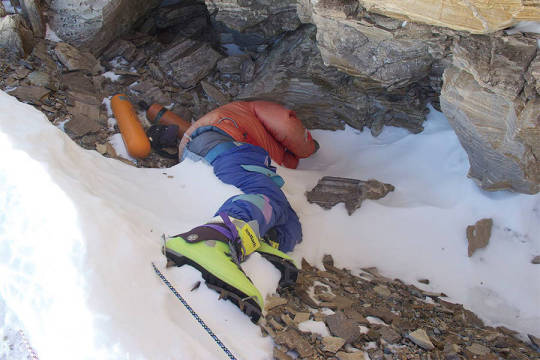

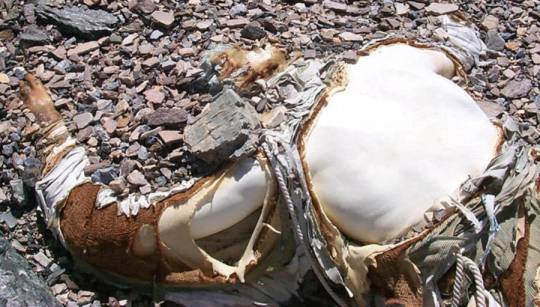
There are an estimated 200 bodies on Mt. Everest, Earth's tallest peak, and climbers often use them as markers to determine how close they are to the top.
These are three of the four most well-known bodies that currently are, or were at one time, on the mountain:
"Green Boots": the real identity of the body climbers refer to as "Green Boots" is presumed to be Tsewang Paljor, who perished in 1996. Not pictured here is the body of David Sharpe, who, when he stopped at Green Boots' cave to rest, slowly froze to death, even while approximately 40 other climbers passed by him dying and did nothing to help.
Hannelore Schmatz became the first German and the first woman to die on the mountain. She succeeded in reaching the summit, but ignored the warnings of her Sherpa on the way back down and camped overnight in the death zone. While she did survive the night, she finally succumbed to exhaustion, low oxygen, and frostbite on her way back to base camp, dying just 330 feet from safety. Her body is no longer visible on the mountain and has either been swept away by the high winds or buried under the snow.
George Mallory was the first person to attempt to climb Mt. Everest in 1924, using "primitive climbing equipment and heavy oxygen bottles." His upper torso, half of his legs, and his left arm were found in 1999. He was dressed in a tweed suit and a rope injury around his waist suggested he'd been climbing with someone else when they fell off a cliff.
#creepy#morbid#macabre#facts#did you know#mt everest#mountain climbing#death#dead body#mountain climbers#tsewang paljor#hannelore schmatz#george mallory#green boots#all that's interesting#interesting#places#outdrs#outdoors#hiking#images
21 notes
·
View notes
Text


youtube
You'll want this handy floating tent when the zombie apocalypse drops. Or maybe you just wanna up your camping experience and sleep somewhere on the surface of the water.
This Shoal Tent by SmithFly is for you! Try it before you buy in the Great Miami River in Ohio.
Pricing: $2000
Dimensions & weight:
measures 8-feet by 8-feet;
standing room and comfortable laying allowance is 6'3" in the middle (taller individuals can sleep diagonally);
tent weight 75 pounds;
when packed down, the storage bag measures 60"x24"x18".
Features:
inflatable, floating raft with tent topper;
kit comes with storage bag, manual foot pump, and patch kit;
no tent poles, both pieces fully inflatable;
raft has three air chambers, inflates to 10 PSI, and has D-rings for anchoring;
raft floor is 6-inches thick and drop-stitched (similar to a paddleboard);
tent fabric is waterproof, PVC-coated, and uses heavy-duty #8 zippers;
all sides of the tent topper are detachable.
#outdrs#shltr#transprt#smithfly#shoal tent#floating tent#camping#hiking#shtf#floating#survival#survivalism#ohio#try before you buy#videos#images#marina#Youtube#zombies#zombie apocalypse#video
17 notes
·
View notes
Text

See the evidence.
#facts#did you know#ecology#trees#biology#botany#forests#scientific american#facebook#life#mother trees#mother earth#memes#images#pics
49 notes
·
View notes
Text

This photo might look hilarious, but cats are actually terrified of cucumbers because they think they are snakes.
4 notes
·
View notes
Text
Using all the parts of a dandelion to produce sautéed greens, honey, and coffee.
#videos#outdrs#wilderness#survival#dandelions#shorts#reels#spicymoustache#honey#coffee#food#f&d#video#facebook#flowers#gardening#organic#edible flowers#edible wildflowers#shtf#emergency#camping#outdoors#survivalism
1 note
·
View note
Text
25 people were killed when their commuter train collided with a freight train on September 12, 2008. One of them was 49-year-old Charles Peck, who died instantly and whose body was found after 12 hours. But for the eleven hours he was missing, his cellphone called his loved ones a total of 35 times.

He had been en route to interview for a new job, which would permit him to finally marry his fiancée. Even though Charles was killed instantly by the impact, his phone made a total of 35 calls to his son, brother, stepmother, sister and fiancée. When they answered, they heard on static, and when they tried to call back, they were immediately sent to voicemail.
The body of Charles Peck was recovered after 12 hours, but his phone was never found.
#facts#true facts#amazing facts#death#spirits#afterlife#mysteries#unsolved mysteries#charles peck#snopes#sad#sad stories
6 notes
·
View notes
Text
Spending $20 million is to Jeff Bezos as spending a dollar is to an average American.
#wealth inequality#facts#eat the rich#jeff bezos#amazon#spending#economy#workers rights#workers of the world unite#living wage#capitalism#anticapitalism#sickening#business insider
48 notes
·
View notes
Text
What to do if you encounter dangerous wildlife on land

Let's just assume for a moment that you're not an animal whisperer so I can provide you with some rad tips on how to (maybe) not die should you encounter dangerous wildlife on your next adventure.
The general rule of thumb is to try to avoid attracting wildlife to begin with by basically lessening your presence as much as possible and keeping food in sealed containers. This includes not having headphones on or earbuds in so you can listen to your surroundings. Still, taking all precautions necessary doesn't mean you'll never encounter predators higher up than you on the food chain.
Here's whatcha do if you're attacked by bears, bison / buffalo, cougars, coyotes / wolves, deer / elk, and/or snakes.
Bears


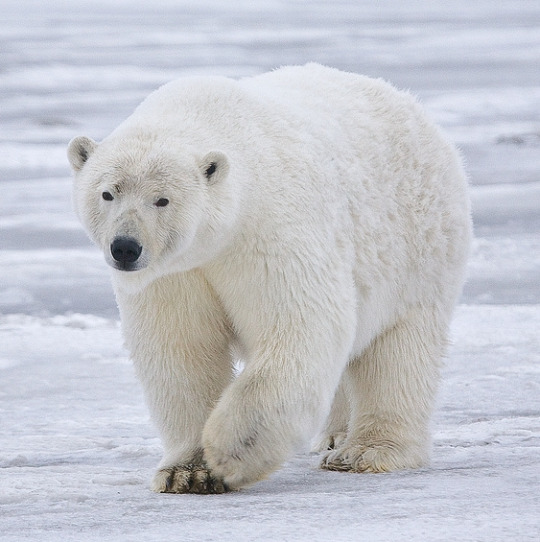
Bears are cute from a safe distance, but do not think for a moment that they wouldn't rip your face off. Outdoor Life says, "All bears are dangerous, but regardless of species you are at greatest risk if you surprise the bear or get between a mother and cubs." Hungry bears are also dangerous because they may see you as competition for food... or as the food. Remember that black and grizzly bears will often bluff charge, so it's important to remember this and not break into a run! Polar bears, however, will rarely bluff charge.
Black bears
Of all the other bear subspecies, the black bear is reputedly the least aggressive, but will still wander into camps, occupied or not, if they get whiffs of food. If this should happen:
DON'T RUN, because this will trigger an attack.
Keep your movements slow and deliberate.
Don't approach the animal. You're not Steve Irwin.
Pick up small children so they're not perceived as prey.
Make loud noises, such as banging pots and pans and/or yelling.
Make yourself appear larger by waving your arms overhead.
Leave plenty of space for the bear to escape so it has a clear escape route and doesn't feel cornered, which will trigger an attack.
Move upwind of the bear so your scent will identify you as human and not the normal type of entrée.
Grizzly bears
These guys don't enjoy surprises, and so actually the louder you are during your hikes through grizzly bear territory, the better your chances of not encountering one at all. In addition, try to hike in as large a group as possible, avoid taking dogs (which are irritants to bears), and keep away from animal carcasses (which may belong to the bear). Still, if you do find yourself within close proximity of a grizzly (verbatim from Outdoor Life):
Stop, remain calm, back away slowly while speaking in a calm voice. You are trying to show the bear that you are being submissive and yielding to his territorial supremacy.
Do not turn your back on the bear or run; that will stimulate an attack.
Avoid direct eye contact, because that is considered an act of aggression.
A grizzly might bluff-charge…or not. If it lowers its head and pins ears back, it’s coming.
Submit. Lie face down on the ground, cover your head with your arms and hands and play as dead as possible. You might be bit or clawed, and then the bear might leave… or not.
If the bear continues to maul you, in spite of your playing dead (an indication that it wants you for food), you might have to fight for your life using any available weapon (knife, stick, rock, fingernails), focusing your counterattack on the bear’s eyes and nose with as much violence as you can muster.
Polar bears
Polar bears are officially the largest land carnivores in the world. And because of the harsh, unforgiving environments in which they live, they are opportunistic hunters and will stalk lone prey if and when given a chance. You'll know the polar bear is agitated if they snap their jaws, make loud huffing noises, stomp their feet, and stare directly at you with their heads lowered and ears pinned against their heads. If the polar bear charges, assume it's not a bluff and be prepared to fight. Once again, running at this point will only ensure your demise.
Parks Canada instructs the following:
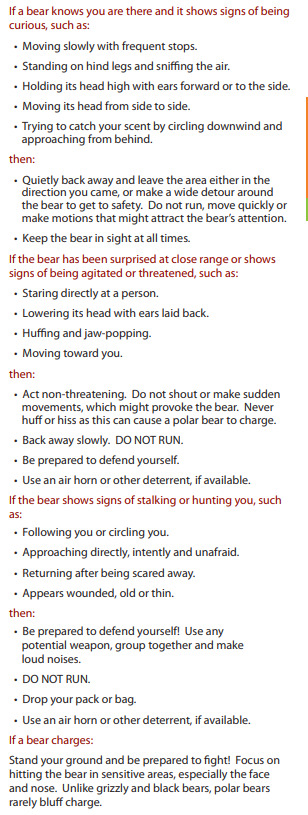
■□■□■□■━■━■□■□■□■
Bison & buffalo
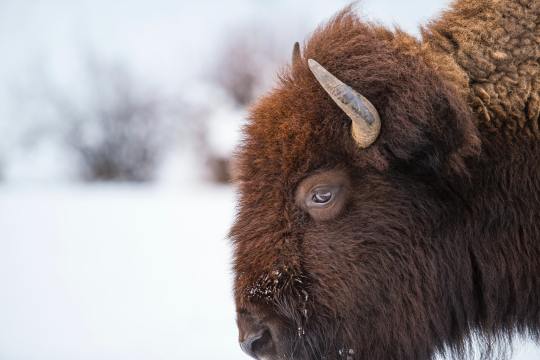
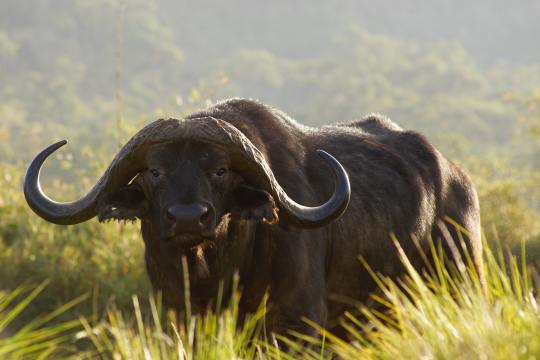
In Yosemite, bison have injured more people than grizzly bears, and while they may look lumbering and slow, they're not. Their size and their antlers are formidable weapons with which they gut and gore those unfortunately without the knowledge of what to do should they encounter a bison in the wild. Visitors and tourists are advised to remain at least 100 yards from bison and, generally, if a bison charges and knocks someone down, they'll go about their way. But in some cases, the bison has stood over the person and attacked them as they've tried to stand up.
Here's what you should do if you encounter a charging bison (verbatim from Outdoor Life):
Run for cover if it's close.
Take cover behind something large and keep moving as the bison tries to get at you.
Climb a tree, if possible.
Keep your distance.
■□■□■□■━■━■□■□■□■
Cougars (aka panthers / pumas / mountain lions)


Avoidance is most preferable, but again, not always possible. According to California's Division of Fish & Wildlife says cougars are most active at "dawn, dusk, [and] night." You should also avoid hiking and/or jogging alone, and "stay alert on trails." Keep children close and do not allow them to roam freely; keep pets on leashes.
Once more, it's important NOT TO RUN! You will instinctively have the urge if you encounter a big cat, but you need to fight it because, as with most other predatory wildlife, this will trigger a chase response in the animal and you will not outrun these felines. An employee of the Utah Division of Wildlife Resources says: "If you see a mountain lion or mountain lion kittens, stop and just back away from the area. If you find a dead deer, especially if it’s been covered up with dirt and sticks and such, stop and back away [...] Because mountain lions will take a deer and kind of throw some vegetation and dirt and rocks on top of it, and they don’t go that far away a lot of times, so that’s when you want to stay away.”
Make yourself appear bigger & make warning shots. It's important that you face the cougar and do your best to look intimidating, which means making eye contact because cougars will consider this threatening. To make yourself appear bigger, wave your arms overhead; if you're wearing a jacket or vest, open it. DO NOT EVER turn your back on or kneel down in front of the cougar.
"Talk to the cat, calmly and firmly, while creating more and more distance from the cat." Make loud noises, but avoid "high pitch tones or high pitch screams." [X]
Fire off a few warning throws with rocks (or whatever you have you can throw) nearby the cougar to show it you can defend yourself. You don't want to hit and unnecessarily injure the animal at this point.
Cougars aren't generally aggressive but will attack for the same reasons as other wild animals: "lack of food, loss of territory, or seeing humans as prey." So if the above doesn't get you safely away, then prepare for physical conflict. Prey of these felines "are often found with puncture wounds to the back of the head or neck, and also to the throat, so these are the areas of your body you need to shield the most. According to Utah's Division of Wildlife Resources, "If the cougar thinks it's not likely to win its fight with you quickly, it will probably give up and leave."
Until that happens, fight for your life by:
Using anything at your disposal, such as "rocks, sticks, caps, jackets, garden tools and even [your] bare hands."
Avoiding falling and try to remain standing at all times. "If you do fall down, don't stop protecting your head and neck while you get back to your feet."
Throwing objects at the cat with the intent to injure or maim. However, the National Parks Service advises not to throw everything you have. "You might want to hold on to one metallic or hard plastic water bottle in reserve to use as a club or as weight in your backpack or fanny pack, which can be swung at the cat if it gets close enough.”
If you have a backpack you can swing it around in front of you to use as a shield; and if you hike with poles, you can use these as weapons.
■□■□■□■━■━■□■□■□■
Coyotes & wolves
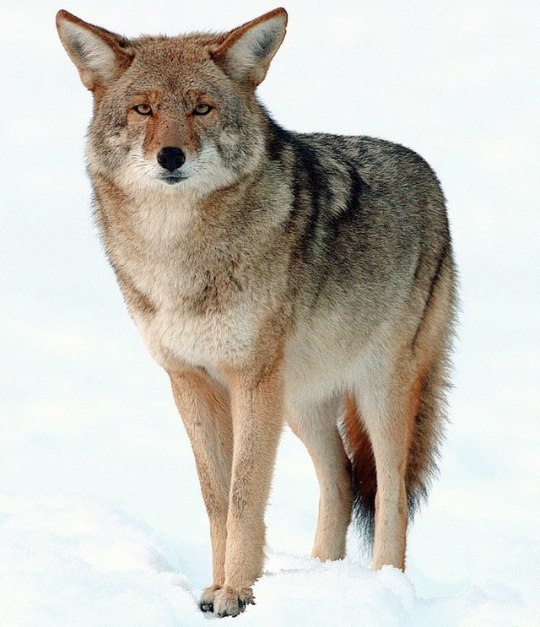

These animals hunt in packs, so if you encounter one, chances are there are more nearby. "[They're] cunning and will stalk their prey, sneaking in from behind to nip and rip at leg muscles to disable their victim. Once you're down, the pack will swarm you."
DON'T RUN!
Face it and maintain eye contact. "Coyotes can be intimidated, and most times simply standing your ground will be enough to send [it] on its way." Maintain eye contact with wolves too to establish your dominance -- don't let them think you're weak.
Make yourself look large (using the same tactics from previously listed animals) and yell or make loud noises.
If you're alone and surrounded, start shooting to kill and don't fall or you'll be overcome.
If you're surrounded and in a group, "position yourselves back to back, facing the animals. Use clubs, knives, sharpened sticks (spears), rocks, or anything else you can grab to fend off the attack."
Protect your throat and arteries.
■□■□■□■━■━■□■□■□■
Deer & elk
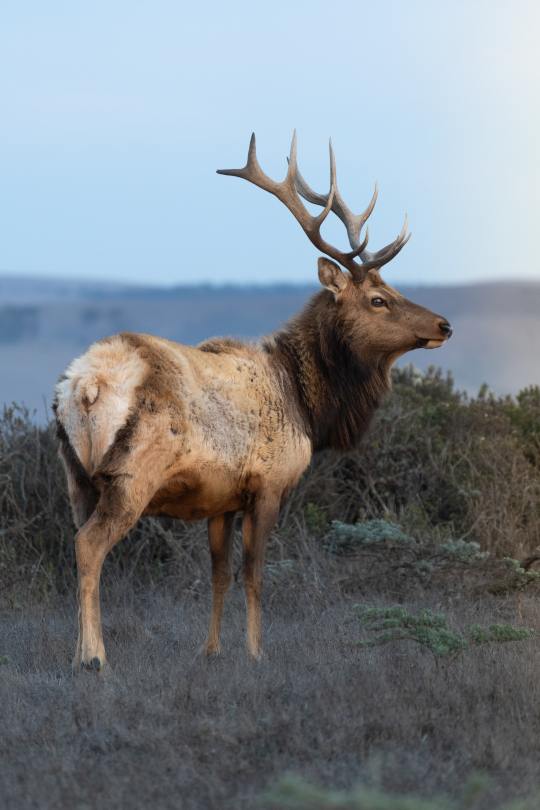

Deer and elk aren't predatory, but they can still be dangerous if they feel threatened or are protecting young. If you're charged by one of these creatures, here's what to do (verbatim from Outdoor Life):
Do not turn your back on the animal, as they almost always charge from behind.
Facing the animal, raise your arms and your jacket to make yourself appear larger. Swing the jacket around to make yourself appear formidable.
If you have a dog with you, turn it loose. This may distract the deer/elk.
If you're able to, climb a tree.
If you're knocked down, curl up into a fetal position and protect your head, neck and organs. You might be thumped a few times, and then it is likely the animal will leave.
If the animal has antlers, you might sustain serious injuries, so do your best to put trees or boulders between you and the animal.
■□■□■□■━■━■□■□■□■
Snakes


Unlike some of the other predators on this list, snakes are not actively looking to attack humans and will only do so if they're cornered, hurt or handled. They're also not in the habit of chasing after you, despite depictions in media.
Venomous snakes are the most dangerous, but even bites from non-venomous snakes can become dangerous if you have an allergy or if they get infected. Here's how you can tell the difference between the two:
Venomous snakes
Produce venoms.
Have fangs with which to deliver the venom to their prey.
Most venomous snakes have a triangle-shaped head.
Have elliptical pupils.
Bites from a venomous snake leave one or two puncture marks on the skins of their prey.
Normally have distinguishable heat-sensitive pits on the head.
Have rattling tails.
Have one row of anal scales.
Non-venomous snakes
Do not produce venoms.
Do not have fangs, but have maxillary teeth in their upper jaws.
Have rounded heads.
Have round pupils.
Bites leave many punctures on the skin.
Do not have distinguishable heat-sensitive pits on the head.
Do not have rattles.
Have two rows of anal scales.
May mimic a venomous snake as a defensive mechanism, which is why it's important to know the differences between them.
Unless you're a pro at spotting these differences, the safest thing to do is just assume every snakebite is venomous. This is the safest route because there are four types of snake venoms, and they are as follows (verbatim from Stone Age Man):
Cardiotoxins: affect the heart; they may cause the heart to beat irregularly or stop, causing death. Cobra venom contains cardiotoxins.
Hemotoxins: destroy red blood cells, cause organ degeneration and general tissue damage. Vipers and pit vipers contain hemotoxins.
Myotoxins / cytotoxins: cause severe tissue damage. If not treated right away, can cause loss of limbs.
Neurotoxins: destructive to nerve tissue and in general are very dangerous because they can shut down your ability to control muscles, like your heart and diaphragm which keeps you breathing!
Avoid encountering snakes to begin with by:
not sticking your hands into holes unless you definitely know what's inside;
avoid walking with bare feet through thick brush without being able to see where you're stepping;
avoiding provoking snakes by trying to handle or kill them;
not handling dead snakes, which can still bite you. This happens even with snakes that have been decapitated if their nerves are stimulated. Venomous snakes are even more likely to retain this reflex after death, so be wary.
If you're bitten, treat it immediately by following the instructions below:
Get safely away from the snake to avoid being bitten again.
Wash the bite with soap and water.
Immobilize the bitten area and keep it lower than the heart. This will slow the venom.
Stay calm and still. Running or any kind of exertion will allow the toxins to travel quickly through your system.
Immediately wrap a bandage tightly 2 to 4 inches above the bite to help slow the venom. The bandage should not be so tight it cuts off a vein or artery, and you should still be able to slip a finger between it and your skin.
Seek medical attention immediately, either by calling 911 or a friend / family member. Do not attempt to drive yourself because you could possibly lose consciousness.
Use a suction device on the bite to draw venom out without making any incisions. You should not make any incisions on or around the wound as they can become infected, and you should not try to suck the venom out, as this will only spread the venom to your mouth.
Mark the bite and the time it happened, and continue marking the redness as it expands along with the time. This will help response teams determine the severity of the bite even if you lose consciousness.
Do not place ice or any cooling elements on the bite, as this will make removing the venom via suction less effective. [ X X ]
#facts#h&fa#outdrs#sd#survival#survivalism#shtf#animals#animal attacks#bears#snakes#cougars#bison#buffalo#deer#elk#wild animals#outdoors#hiking#camping#first aid#what to do
3 notes
·
View notes
Text
I don't know if I've already mentioned this, but this is a secondary blog. Any follows come from my primary blog.
0 notes
Text
Free emergency smartphone apps for techy trekkers

While we should try not to rely strictly on technology (or anything, really, that requires electricity or charging) in survival situations, we can't deny that having certain apps on our phones can definitely prove helpful in some situations. Not all circumstances will be the same, and if you're the kinda person that keeps a full-charge on your phone (because you never know when you'll really need it!) and feel safer out in the wild with technology on your side, then this list of apps is for you.
Androids and iPhones both already come factory with some safety features you may need to manually enable, such as location tracking.
Please feel free to add to this list by posting your suggestion in the comments.
American Red Cross
Emergency [Android / iOS] // This free app is available in English and Spanish, and location-specific alerts can be set so that if (or when) they're under threat of "climate-affected hazards" (such as hurricanes, floods, tornadoes, etc.), you'll be notified in time so you and your family can take emergency measures. It includes a live map so you can track the hazard in real time as it's happening.
First Aid [Android / iOS] // This helpful app includes preloaded content providing step-by-step instructions for basic first aid needs and life-threatening situations; it also provides a list of the hospitals nearest your location.
Pet First Aid [Android / iOS] // This is a must have for every pet owner! It not only collects your vet's information and keeps it handy for your for emergency situations, it's a database of knowledge for determining what may be affecting your furbaby and when it's time to get them to a hospital. Similar to the First Aid version for humans, this app also provides detailed instructions on how to handle common and basic first aid pet situations.
Compass Steel 3D [Android]
Free AND ad-free, this helpful app serves as a "marine-style compass" that offers two navigational modes, one using True North and the other using Magnetic South. Also provides sun and moon positions, and tells you the times for sunrise, sunset, moonrise, and moonset.
The Federal Emergency Management Agency (FEMA) app [Android / iOS]
This app tells you how to prepare for emergency situations by preparing bugout bags, having an effective communication plan, etc. It also provides real-time weather and emergency alerts for any five locations you choose, as well as directs you to safety evacuation shelters nearest you. If your area is affected by a disaster, you can apply for assistance directly through the app.
iHunt Calls [Android / iOS]
One of the worst case scenarios I can imagine (aside from death) would being lost in the wilderness with no food and desperately needing something to eat. Of course, you'll need a firearm or some sort of homemade weapon or trap. But let's imagine you've considered this beforehand and now just need a way to attract some wildlife. This app has 600 hunting calls from 47 different animals. Just scroll down the list, pick the animal and then set the delay time between calls and let the rest happen as it will.
Rescu [Android / iOS]
Rescu is perfect for when you need emergency ambulance, fire, and/or police services to arrive and unable to talk for whatever reason. Tapping any of the three options three quick times will send the desired service to any of four addresses you have programmed into the app via GPS. In addition, you can store an unlimited number of personal contacts to be alerted at the same time.
Scanner Radio [Android / iOS]
This app turns your phone into a police scanner with "live audio from over 7,000 fire and police scanners, NOAA weather radio stations, ham radio repeaters, air traffic, and marine radios from around the world."
#h&fa#inclement weather#n&s#outdrs#t&w#apps#android#iphone#survival#survivalism#smartphone apps#red cross#fema#hunting#wilderness#compass#free apps#scanner#scanner radio#ios#emergency#noaa#alerts#lost#pets#pet first aid#first aid#navigation
0 notes
Text
Everything you do burns calories. Even doing nothing burns calories because metabolization still exerts energy; so, even if you sat completely still and did absolutely nothing all day long, you'd still burn at least 1800 calories a day.
#fun facts#facts#random facts#weight loss#biology#food#exercise#weight loss facts#wellness#health#cool facts
27 notes
·
View notes
Text
Hello, everyone!
Wow, I've been away for awhile due to some health issues, but in that time, it seems the blog has really exploded! I wanted to sincerely thank everyone for sticking with me and for following me (even during the period of inactivity), your support means the world to me.
0 notes